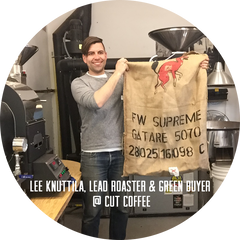Often when speaking with coffee roasters, terroir is brought up as one of the qualities that makes a specific coffee special. With the 3 coffees featured this month, their uniqueness is absolutely related to their unique terroir. So, what does terroir really mean?

“Terroir in coffee typically alludes to a selection of country, region, variety, altitude, crop cycle, soil, weather, and processing. I would never argue against these being the integral components that contribute to taste but it is difficult to disentangle or separate them. I would argue terroir for coffee is the accumulative effect origin,” explained Lee Knuttila, Lead Roaster & Green Buyer at Cut Coffee.
All the specifics from origin come into play with terroir.
The Brazilian Córrego Lavrinhas coffee from Pilot is grown at 900 MASL, which in a vacuum could imply lower quality, however with the unique micro-climate, it doesn’t truly represent what to expect from a lower altitude coffee.
When you take Los Girasoles by Detour Coffee and compare it to another coffee grown nearby like El Vendaval (which was featured in the January issue early this year) it brings up even more questions. The two coffees are grown on farms located 2km apart, they are produced by the same farmer and processed at the same mill, yet regardless of the proximity and producing similarities, they’re quite far apart in taste.
“Vendeval means weather where it’s windy and misty rain… that kind of storm that’s not full rain, but not just mist, that very specific light rain. It gets the two weather systems colliding right where it’s from the Atlantic and the Pacific. It gets this very different weather at the top of the mountain, because there’s a little bit of influence from the other side, which is the last break before it’s just in the Atlantic side. Girasoles on the other hand, gets totally different weather,” explained Geoff Woodley, Director of Coffee at Detour Coffee Roasters who recently visited these farms and personally experienced the difference in weather.

The tricky thing about terroir is that so much of it is completely entangled, which makes it difficult to easily describe and as a result, it can feel intangible. The term is all about interconnection though, as Lee Knuttila from Cut Coffee explains.
“Country and region certainly will have a massive determinate on flavours because they shape growing conditions. Processing is key, as a coffee is only as good as its weakest link in the growing, picking, processing, shipping, roasting and brewing chain. Altitude influences density, which benefits clarity and acidity but only with agreeable weather and rainfall. The varietal will produce or hinder specific ranges of flavour but only when washed properly.”
“Hence, my stress on interconnection.”






